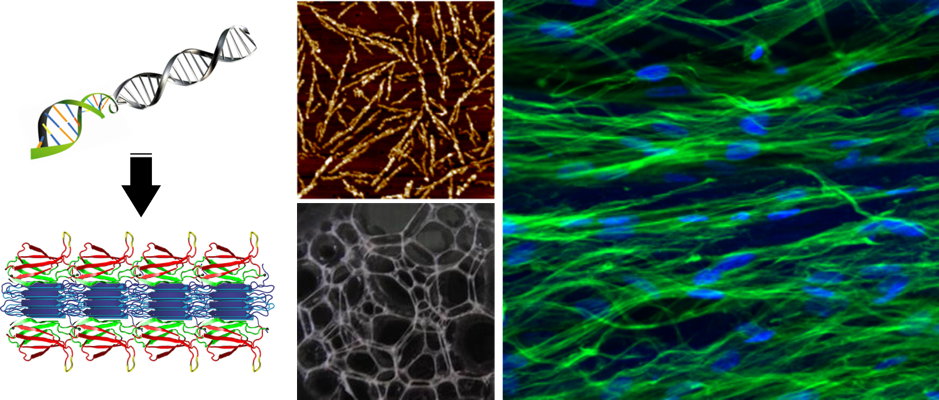The Hedhammar Lab
Silk proteins have a unique propensity to assemble their chains in an ingenious way so that a material with favourable properties is formed. We survey the silk assembly mechanism and investigate how to best control it to achieve desired formats, e.g. fibers, fibrillar coatings and 3D networks.
By the use of biotechnology methods, it is feasible to combine various functional molecules. We have developed methods to functionalize silk either at genetic or protein level. This allows us to design and construct silk materials with incorporated functionalities such as specific affinity, enzymatic activity, antimicrobial effects and cell stimulation.
The main focus of our research is to utilise silk assembly in combination with biotechnology methods for biomedical applications. For example, we have designed a silk fusion harbouring a motif from fibronectin, FN-silk, to mimic the extracellular matrix (ECM) both in morphology (microfibers), mechanical properties (strong and elastic) and biochemical properties (protein-based with cell adhesion motifs). The mild silk assembly process is compatible with cells, which thereby get integrated into functional 3D tissue constructs. We utilise this strategy to create in vitro models of e.g. skin and blood vessels. Moreover, we develop miniature cancer-models, to be used for evaluation of drugs for personalized treatment plans.

